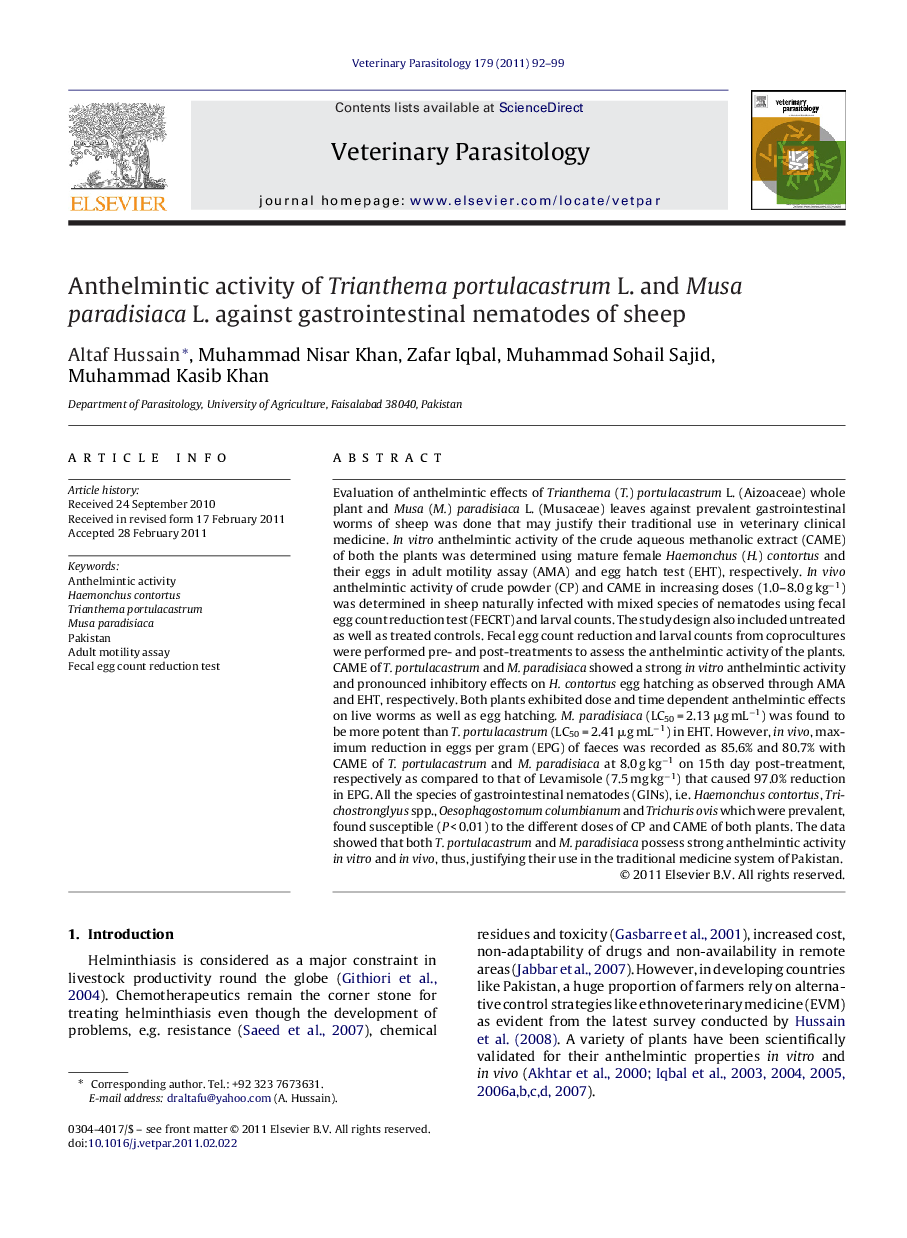| کد مقاله | کد نشریه | سال انتشار | مقاله انگلیسی | نسخه تمام متن |
|---|---|---|---|---|
| 2470256 | 1555724 | 2011 | 8 صفحه PDF | دانلود رایگان |

Evaluation of anthelmintic effects of Trianthema (T.) portulacastrum L. (Aizoaceae) whole plant and Musa (M.) paradisiaca L. (Musaceae) leaves against prevalent gastrointestinal worms of sheep was done that may justify their traditional use in veterinary clinical medicine. In vitro anthelmintic activity of the crude aqueous methanolic extract (CAME) of both the plants was determined using mature female Haemonchus (H.) contortus and their eggs in adult motility assay (AMA) and egg hatch test (EHT), respectively. In vivo anthelmintic activity of crude powder (CP) and CAME in increasing doses (1.0–8.0 g kg−1) was determined in sheep naturally infected with mixed species of nematodes using fecal egg count reduction test (FECRT) and larval counts. The study design also included untreated as well as treated controls. Fecal egg count reduction and larval counts from coprocultures were performed pre- and post-treatments to assess the anthelmintic activity of the plants. CAME of T. portulacastrum and M. paradisiaca showed a strong in vitro anthelmintic activity and pronounced inhibitory effects on H. contortus egg hatching as observed through AMA and EHT, respectively. Both plants exhibited dose and time dependent anthelmintic effects on live worms as well as egg hatching. M. paradisiaca (LC50 = 2.13 μg mL−1) was found to be more potent than T. portulacastrum (LC50 = 2.41 μg mL−1) in EHT. However, in vivo, maximum reduction in eggs per gram (EPG) of faeces was recorded as 85.6% and 80.7% with CAME of T. portulacastrum and M. paradisiaca at 8.0 g kg−1 on 15th day post-treatment, respectively as compared to that of Levamisole (7.5 mg kg−1) that caused 97.0% reduction in EPG. All the species of gastrointestinal nematodes (GINs), i.e. Haemonchus contortus, Trichostronglyus spp., Oesophagostomum columbianum and Trichuris ovis which were prevalent, found susceptible (P < 0.01) to the different doses of CP and CAME of both plants. The data showed that both T. portulacastrum and M. paradisiaca possess strong anthelmintic activity in vitro and in vivo, thus, justifying their use in the traditional medicine system of Pakistan.
Journal: Veterinary Parasitology - Volume 179, Issues 1–3, 30 June 2011, Pages 92–99